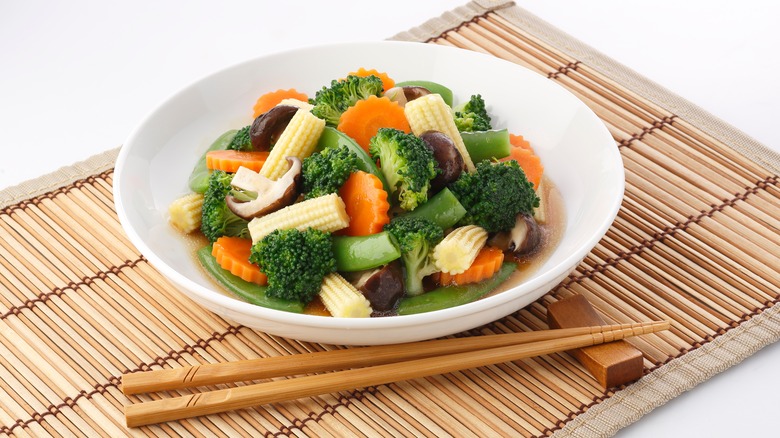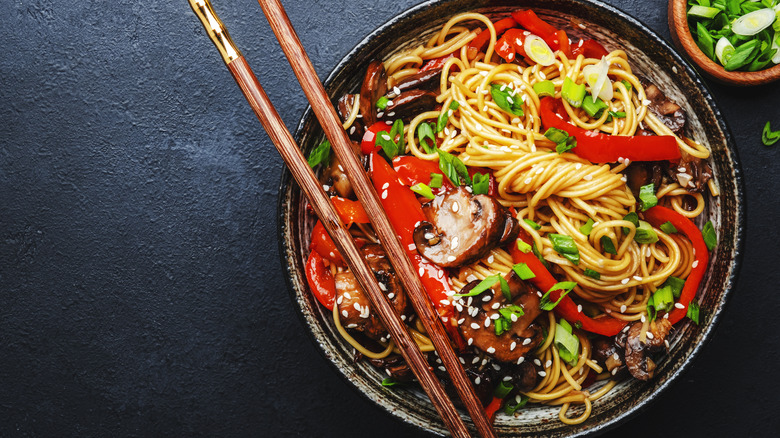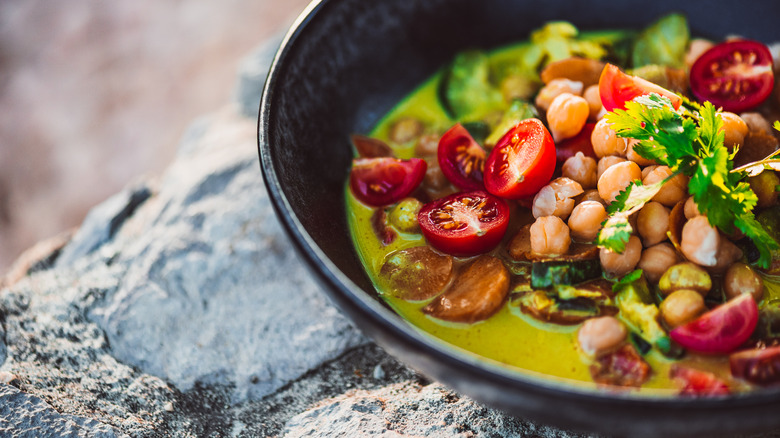How Cooking Asian Cuisine Can Instantly Bolster Your Vegan Diet
It's not always easy to be vegan. It can be a challenge to navigate a world that predominantly caters to non-vegan diets. Going out to eat means scanning dozens of menus to find suitable options, or tolerate a plate of plain vegetables and rice. The struggle is not just about finding suitable plant-based alternatives; it's also about being mindful of animal-derived ingredients hidden in unexpected places, such as butter in the mashed potatoes or anchovies in your Caesar salad dressing.
Meanwhile, although plant-based foods are growing in leaps and bounds in restaurant menus and on supermarket shelves, choices are still relatively limited and often focus on substituting elements of the Western diet. From ground meat to cheeses, these products are designed to mimic their animal product counterparts. However, instead of trying to recreate meat and dairy-based items, your vegan diet can be vastly expanded if you try cooking Asian food. With a rich vegan tradition due to religious and cultural influences, there are a lot more vegan ingredients and recipes that can be made with easily obtained ingredients and offer a diverse array of flavors and textures.
Vegan Asian food is diverse and delicious
Whether you prefer the spice of Thai food, the complexity of Indian dishes, or the intricate simplicity of Japanese cuisine, you can make many vegan versions of many Asian dishes. Thanks to the region's history with Buddhism, which prohibits the killing of animals, Japan banned meat eating for centuries. There is even an entire genre of cuisine developed in Korea dedicated to food from their temples. While Buddhist diets are even more restrictive than simple veganism (for example, leeks and garlic are off limits), the widespread influence of the religion (as well as Hinduism, Jainism, and Sikhism) meant that Asian cuisines are easily adaptable for vegans without sacrificing flavor.
For instance, many basic components of Asian foods are easily vegan and adaptable, such as Japanese dashi, which can be made with shiitake mushrooms instead of cured bonito flakes. Oyster sauce, one of the most common condiments in Chinese cuisine, is readily available with a version made from mushrooms, making it vegan. Tofu of all types is ready to add protein to your dishes, providing a wide diversity of textures depending on the type, making replacing meat in common Asian dishes a breeze.
Asian vegan dishes are easier than you think
While some might sound complicated and difficult, Asian vegan recipes are typically quite easy to make. For example, a panang curry with vegetables and firm fried tofu cubes is easy to assemble, the ingredients readily available in every Asian market, and economical to make. A popular Korean noodle dish, known as japchae, can be made vegan simply by omitting the meat, no substitution needed. Bombay potatoes with a helping of dal makhani (black gram and kidney beans in a vegan curry) are simple to get simmering on the stove.
A vegetable stir fry that is studded with slivers of garlic and ginger and seasoned with sesame oil, will have you coming back time and again for this quick but delicious dish. A vegan phở can easily be assembled with vegetable broth simmered with phở spices, fresh vegetables, rice noodles, and mushrooms. Or try a spicy vegan dragon noodle salad for a filling dinner.
In sum, cuisines from multiple Asian countries, with their rich vegetarian traditions, are remarkably easy to adapt to vegan diets. Instead of looking for expensive substitutes that are designed to mimic meat, Asian vegan dishes use readily available produce and common products, making them easy to make and delicious to savor.



